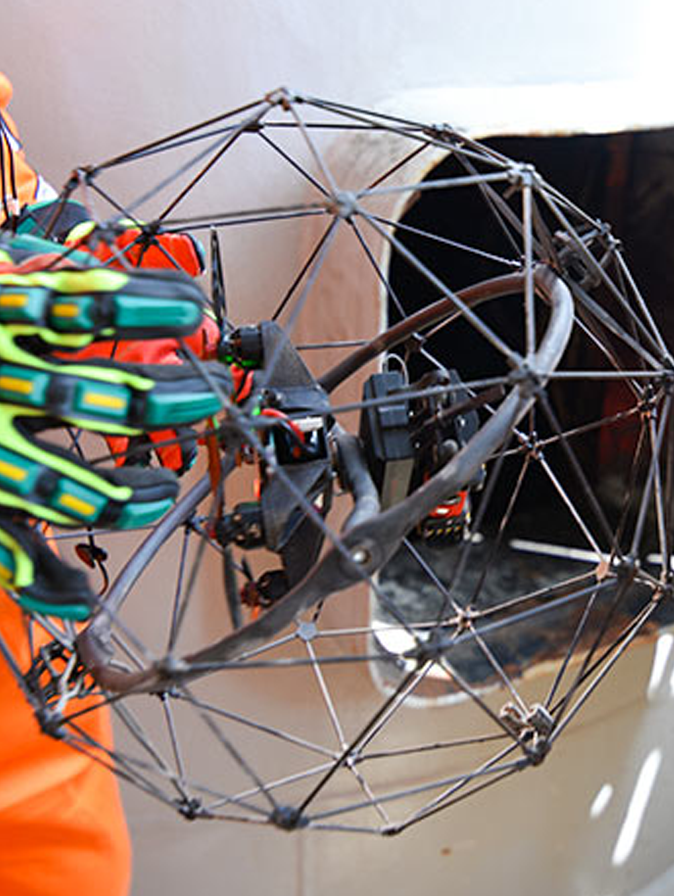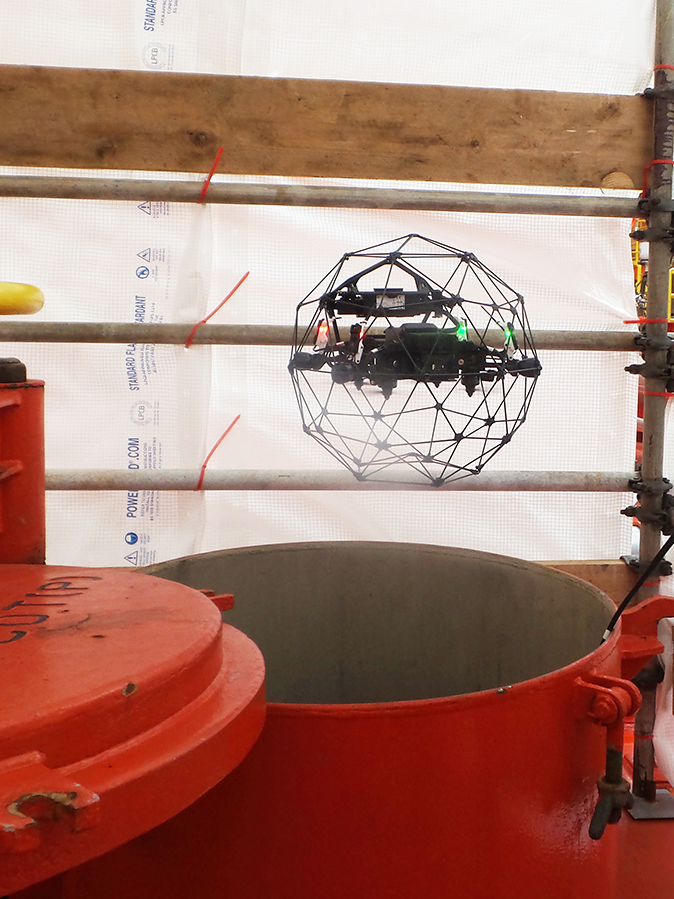TEXO successfully pioneered a new unmanned inspection method on a major UK North Sea FPSO, delivering significant safety, time and cost saving benefits in surveying a vast oil storage tank. The installation has been used to produce heavy oil from the EnQuest-operated Kraken field, located east of Shetland, since it came on stream in 2017.
Usually, it would take a four-man team 14 days to complete a similar extent of inspection, using traditional rope access. Instead, TEXO used just two people in a 96-hour operation over four shifts. Our use of an umanned vehicle meant that no personnel needed to enter the tank, reducing hazardous working, and significantly cutting time and costs.
We used a Confined Space Unmanned Aerial Vehicle (UAS): Elios 2. This is an intuitive, reliable, and precise confined space inspection UAS. The rotors and housing are contained within a protective cage, allowing the UAS to roll and bump against surfaces. The UAS has GPS-free stabilisation and distance lock facilities allowing for consistent inspection results, in 4K data capture.
Our drone pilot and inspector provided a live video stream of the close-up inspection from inside the tank to the attending DNV GL surveyor who reviewed the footage to conduct the survey.
Completing the job in a shorter timeframe and with fewer operatives meant less bed space was required on the FPSO which also generated substantial savings.
Getting the storage capacity back into operation in a safe and timely manner is a big plus for the operator, which needs to get each tank on the FPSO checked and verified every five years.
Steve Moir, TEXO Asset Integrity Operations Director, said early engagement with Bumi Armada was key to identifying potential risks and putting mitigation measures in place.
“The number one priority for TEXO and its clients is safety. When you are introducing a new way of working, it always comes with some risk. But by engaging early in the process, the client was able to contribute to the process of identifying risks and helping put safety measures in place. This early engagement meant that everyone on board was brought up to speed and knew what was expected of them.”
We were able to demonstrate to BUMI Armada and the Class Society that we have a reliable and consistent product which could stand up to close scrutiny. To validate the product, TEXO spent thousands of personnel hours, testing the UAS performances and developing the flight techniques, risk assessments, written instructions and reporting tools to deliver the survey.
“The use of remote inspection techniques is rapidly increasing, as technology like drones can now be used as an efficient alternative means for close-up inspection in some types or part of surveys of ships and mobile offshore units.
Since 2019, DNV GL has been approving service suppliers to assist in carrying out surveys using remote inspection techniques, such as drones, climbers or remotely operated vehicles.
By working with TEXO on the remote inspection of the Armada Kraken FPSO, we were able to reduce downtime for the owner as well as reducing the risk to surveyors and personnel onboard. As a result of the successful survey we could also certify that TEXO meets DNV GL and IACS RIT requirements.”
Scott Jervis, DNV GL Regional Offshore Manager, west Europe

